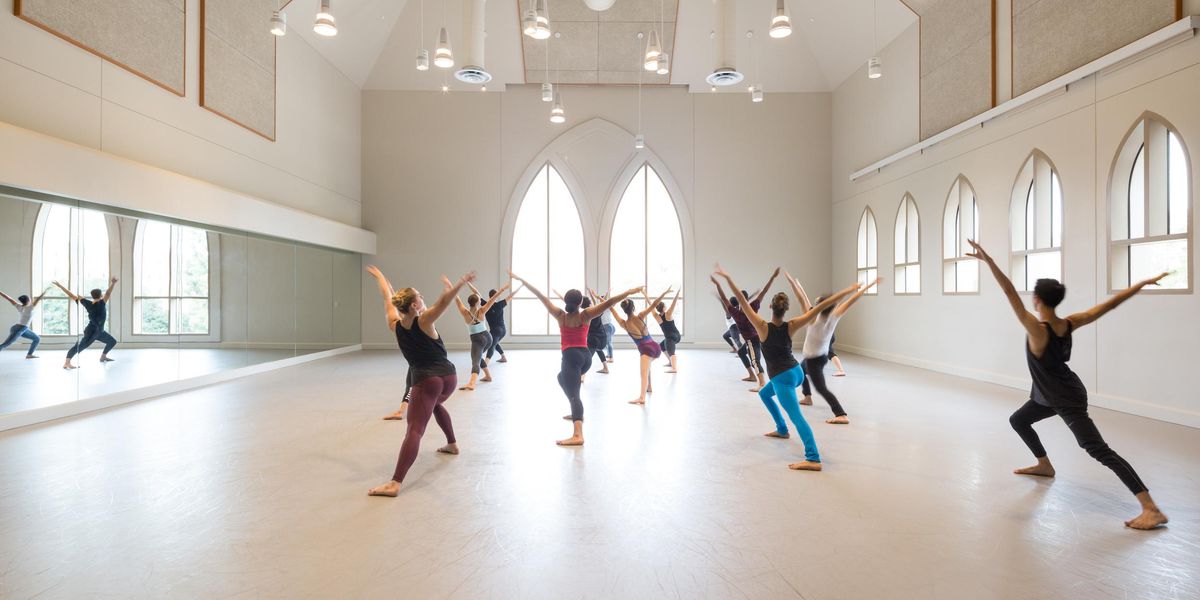Turning Exercise On Its Head
A memory of Joe Pilates
In 1942, when I was 20, I ran away from home to be a dancer.
At Jacob’s Pillow University of the Dance, my first class was called Pilates. Pilates? Anxious, I went to the studio early and found a man standing on his head. “Gut morgen!” he called from the corner of the studio. He bounced down from his headstand and strolled over to me. Strength, solid strength, dwelled in this short, rugged but nimble man.
“No no! You stay. Always start da day on da head. I am Joseph Pilates. You are new girl.”
He gripped my hand with a quick, numbing grasp. “Turn ’round! Turn ’round,” he ordered, pushing on my shoulder. ”Aha! Za back iss no gut!” Pilates gave a hearty laugh and with a couple of hard smacks to my upper arm, promised, “We fix! We fix!”
Promptly at 8:00 a.m., clapping his hands together, Pilates directed class with a relentless stream of demands designed for strength and control. There was no music. Each exercise had its own rhythm and breathing—air out! air in! On the bare floor, I envied those on mats as we did the “Hun’ert” (The Hundreds), flung our bodies “onza stomick,” then “onza back!” or to “da udder zide an hold it!”
Standing, Pilates told us to “hug a tree.” What? Other students, knees bent and arms encircling at breast level, were trembling with isometric tension. Seeing my bewilderment, Pilates strode over to me. Throwing a heavy hand over my left breast and jiggling it up and down, he roared, “You vant schloppy pectorals? You sqveeze!” Mortified, I sqveezed.
Class finished with Round the Clock: complete body flexion to complete extension, moving to the 12:00 positions. “Tventy-four dimes! Tvelve for you, new girl! Do this if nothing else each day!”
Pilates stopped me again on my way out of class. Placing both hands on my hip bones, he tipped my pelvis under. “Ziss vay! Only ziss vay you,” he frowned, then smiled.
Pilates’ class was compulsory for every student. We came willingly as we better understood how it strengthened us, gave us faith in our bodies. What I had called my “dancer’s back” was a physical defect: lordosis. Under Pilates’ care, I gave birth to three vertebrae I had never felt before, correcting my alignment. Joe was famous for correcting back problems, saying, “You are as strong as your weakest vertebra, like a ladder with a broken rung.”
Pilates’ class was a fine warm-up for ballet, modern, Spanish—any dance class. Guest artists often joined our classes, as did our teachers Thalia Mara, Arthur Mahoney, and Elizabeth Waters; sometimes Ted Shawn (founder of Jacob’s Pillow) himself.
We did not know much about Joe’s background. Rumor had it that he had been hired by the United States Marines to set up a bodybuilding system for them. Just right for dancers, thought Ted Shawn, and hired Joe for the Pillow.
At first I was not sure Joe liked dance or dancers. He gave no quarter in class. We were still considered flighty dilettantes during the war. But he grew to respect our struggles, caring for us as a Dutch uncle would. He was a therapist to us whenever we had a sprained ankle or pulled muscle. (He could also be naughty. Once when he was massaging my strained ankle, I caught him massaging all the way up my thigh. I clasped my hands at my knee, giving him a look. He just chuckled.)
In 1943, as World War II went fearfully on, finances were difficult at the Pillow. Classes were dismissed so we could pick the “Berkshire sapphires”—blueberries—to be sold for added revenue. Dinner that night was steamed milkweed. Three of us made a beeline to Joe’s cabin in the woods, pleading starvation. Joe laughed, “We fix! We fix!” and whipped up some lovely scrambled eggs, bacon, and toast.
During the three years I studied under Joe, he never used any of his machines or weights with us. The body must supply the energy. He seldom used kinesiology nomenclature, calling out his 33 exercises: Corkscrew, Scissor, Boomerang, etc. Teaser, the body balancing like a jackknife, was a favorite.
In 1943, Shawn planned a performance with faculty members Natalie Krassovska and Grant Mouradoff, who were with the Ballet Russe de Monte Carlo, and the scholarship students. We were thrilled to be on that sacred stage. So was Joe. He proudly explained his Pilates System of Contrology as we demonstrated his exercises.
There we were, hidden away in the Berkshire Mountains, meaning nothing to the world at war. But you learn that everything counts. All those Hundreds and Round the Clocks paid off. By obeying Joe, I became strong enough to be Ted Shawn’s partner in Gypsy Rondo-bout Town on that same program.
Once you have learned Pilates, it becomes a conscience for your body the rest of your life. For me, pure Pilates is still the best. At 88, I still have my own knees and can bend to place my hands on the floor—and oh yes! Sqveeeeze!
Sharry Underwood danced on Broadway and the concert stage for Agnes de Mille, Charles Weidman, Michael Kidd, and Hanya Holm. She reconstructed “Lost Dances of Ted Shawn” in 2000 at Jacob’s Pillow and is now completing a book about dancing in the 1940s, to be published by The Mellen Press.
Photo by Eric Sanford, courtesy Jacob’s Pillow




